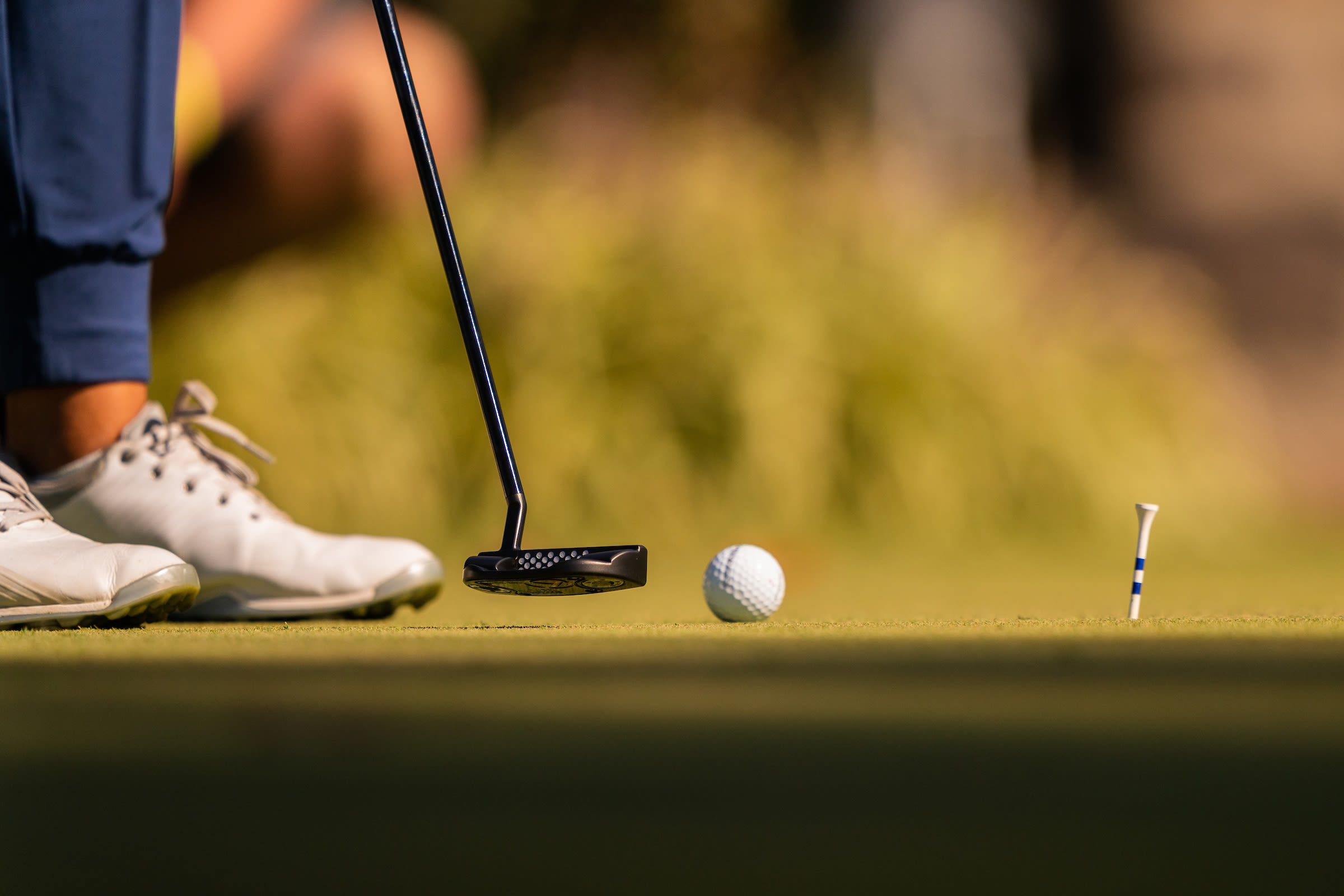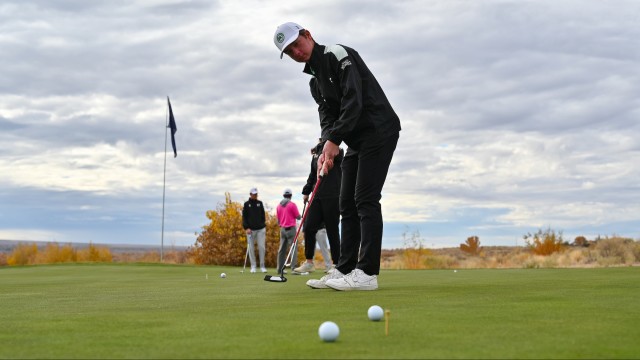Equipment
How to Choose the Perfect Putter
By Daniel Park
Published on

A contestant lines her putter to the golf ball on the practice greens during the second round of the 2020 KPMG Women's PGA Championship at Aronimink Golf Club on October 9, 2020 in Newtown Square, Pennsylvania. (Photo by Darren Carroll/PGA of America)
The game of golf, for many, would be so much simpler without putting. Whether its judging a 40-foot winder, or keeping your nerve over a 4-foot downhiller, putting can make or break a round of golf.
The putter is the most used club in any golfer’s bag, by far, and yet many golfers simply choose a putter that looks good on the rack or has a good reputation. There are so many different styles of putter on the market, and as a club that is used so much, it only makes sense to pay close attention to the one you choose. If possible, everyone should be professionally fitted for a putter. If that is not an option for you, hopefully the following information can help you self-fit a putter.
Type of stroke
Before we can look at some features of the market’s putters, we must outline the two main styles of putting. Most golfers fall into one of two putting stroke categories – straight, or slight arc. The type of stroke you have will help determine the perfect putter for you.
The straight putting style refers to a golfer who attempts to keep the club path very straight back-and-through, whilst keeping the putter face angle square to target.
A golfer who putts using a slight arc will take the club back slightly inside, return to the ball square, and finish on a slight arc to the left. Throughout the arc stroke, the golfer will open the face on the backstroke, close to square at impact, and finish with a slightly closed putter face.
Head Balancing
The first feature of a putter you should consider is the head balancing. Depending on whether your stroke is straight path or slight arc, you will need either a face-balanced putter or a toe-hang putter.
Having a face-balanced putter allows the golfer to more easily maintain a square putter face throughout the stroke. A toe-hang putter will give the golfer a better chance of putting with a consistent arc.
To see whether a putter is face-balanced or toe-hang, you can perform a simple test. You want to balance the shaft of the putter horizontally across your open palm, allowing the head to rotate to its natural resting position. If the face points directly to the sky, you have a face-balanced putter. If the toe of the putter hangs down or to the side, you have a toe-hang putter.
Head Shape and Weight
Once you’ve chosen whether you need a face-balanced or toe-hang putter, the next step is to look at the head shape and weight. Some of this is dependent on personal preference, but it can also be suited to the type of greens you play on and your standard of golf. If you consider yourself to be a good golfer, who can consistently strike the sweet spot of a putter, then you may consider using a blade-style putter. These types of putter typically provide the least forgiveness, but do give the more traditional look. If you need some help keeping your stroke consistent and striking your putts solidly, then a mallet putter may work better for you.
In terms of weight, again this can change due to personal preferences but it can also be fitted to the greens you typically play on. Quite simply, if you putt on slower greens then you should consider using a slightly heavier head. If you putt on faster greens, to retain some feel when putting, you should consider a lighter putter.
Shaft Length
The length of your putter is something that ideally would be determined by a PGA professional. To give an approximation of the ideal shaft length for you, there is a simple test you can do:
- First, address a putt as you normally would.
- Then, you should drop a golf ball from your left eye.
If the dropped golf ball lands on the golf ball you are about to hit, it could be said that your putter is the right length (there are other factors involved).
If the dropped golf ball lands between the stationary golf ball and your feet, it could be said that your putter is too long (this is extremely common). To ensure your eyes are over the ball, the dropped golf ball should strike the stationary ball.
Type of Grip
Finally, the finishing touch of a grip. There are 100's of different grip styles currently on the market. A lot of choosing the grip for your putter should be based on personal preference. There are some things to consider, however: First, using a wider grip will separate your hands on the golf club and could help reduce wrist hinge/flicking in the putting stroke. Also, using a heavier grip will give the sensation of a lighter head weight. Alternatively, using a lighter grip will give the sensation of a heavier head weight.
With all this information, you can select the right putter for your game and begin to hole more putts! Cleveland Golf offers a wide range of putters, and you can also custom order a putter based on your specifications.
#Golf Equipment


